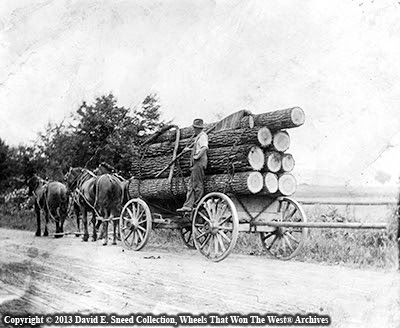Throughout the early wood-wheeled wagon era, therewere many ideas as to how to handle this inconvenient and inefficientchallenge. Some dealt with it by tryingto design a multi-purpose bed that could be used for virtually anypurpose. In an article entitled,“American Ingenuity,” I wrote about one company’s approach to this in the Mayissue of Farm Collector magazine back in 2005. Not convinced that one box could ever work for all purposes, other usersinsisted that there were almost always times that a box needed to beremoved. Recognizing this, there weremultiple devices engineered for aiding in the lifting of the boxes.
One such design was patented in 1886 by WilliamFreeland of Edwardsport, Indiana. Hisidea was to use a pivoting boom to lift the box straight off the wagongear. Here, we’ve shown his patentdrawings demonstrating how the basic machine was to work. Figures 1 shows an overhead view while figure2 highlights the end view and the 3rd illustration profiles a perspective fromthe side. Collectively, it’s a great usefor the ages-old fulcrum and lever design written about by Archimedes during the3rd century B.C.


